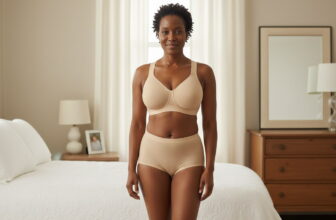The desire for tanned, glowing skin is real! And for this generation, there is no stopping any channel that guarantees the fulfillment of this glow quest. According to the Sunbed Association, using a sunbed is one viral beauty avenue that is especially appealing during the summer months, when the pressure to get a tan is greater. As more people explore this glow option, especially with the current TikTok rave, certain health concerns have been raised, highlighting the possibility that sunbeds are unsafe.
What are Sunbeds?
Sunbeds are indoor tanning devices that work by exposing the skin to UV radiation, which is similar to that found in sunlight. This causes the skin to tan by releasing a chemical called melanin. Sunbeds, on the other hand, produce primarily UVA radiation, which penetrates deeper into your skin than sunlight. These deeply penetrable rays are stronger than those of tropical midday sun and, as a result, are extremely harmful and damaging to the skin.
Are Sunbeds Safe To Use?
Several hacks and tutorials on how to use these sunbeds are floating around the streets of TikTok (with over 80 million #sunbed views), and even stranger is the tanning hack involving nasal spray. This may appear to be completely effective, but one thing is awfully missing: the realization of how insanely dangerous sunbeds are.
Sunbeds are extremely dangerous. As a result, most skincare enthusiasts may find it difficult to believe that they still exist and that people are excited about using them. On Twitter, a user, @GracetyOConnell hopping on the subject matter, wrote “Swear I’ve never heard the use of sunbeds so normalized as much as I have lately? I feel like I’m back in 2002, Sis, no.”
The evidence that indoor tanning significantly increases your risk of skin cancer is so compelling that the FDA requires warning labels on all indoor tanning equipment.
According to NHS, young people face greater dangers and evidence shows that people who are frequently exposed to UV rays before the age of 25 are more likely to develop skin cancer later in life and childhood sunburn increases the risk of developing skin cancer later in life.
Jay Allen, an activist, and ex-tanner had been a witness to the dangers of using sunbeds and shared his firsthand experience with Glamour UK. He said, “Ten years ago, I noticed a mole on my ankle. I thought it was some time to do with my boots rubbing on my skin.”
At the time, according to Glamour, “Jay was a truck driver in Australia. His long hours meant he never went outside during the day, so he would turn to sunbeds for a tan. It was melanoma and Jay had to undergo surgery, a groin dissection operation, and interferon therapy (a dramatic treatment that uses an artificial version of one of the body’s own proteins to boost the immune system, and can have seriously unpleasant side effects.) Thankfully, Jay received the all-clear after intensive treatment and has since campaigned tirelessly to get sunbeds banned in his home country and across the globe.”
How Can I achieve A Safe Tan?
There is no such thing as a safe tan with sunbeds. A safe tan can only happen when your body naturally reacts to moderate UV exposure. But, if you must use the sunbed, the Health and Safety Executive (HSE) has issued guidance on the health and skin implications of the use of UV tanning equipment such as sunbeds, sunlamps, and tanning booths. They suggest that while you should always consult your sunbed operator for advice on your skin type and how long your tanning session should last, you shouldn’t use tanning equipment if the following factors affect you;
- If you have sensitive skin that burns easily or tans slowly or poorly.
- If you have a history of sunburn, particularly in childhood.
- If you’ve got lots of freckles or red hair.
- If you’ve got lots of moles.
- If you’re taking medicines or using creams that make your skin sensitive to sunlight.
- If you have a medical condition made worse by sunlight, such as vitiligo, a long-term skin condition caused by the lack of a chemical called melanin in the skin.
- If you have had skin cancer or someone in your family has had it.
- If you already have badly sun-damaged skin
According to the Sunbed Association, UV light is the most natural source of vitamin D, which is essential for good health. This means that a sunbed tan may be completely unnecessary. If you’re concerned about getting enough vitamin D, there are a variety of foods you can eat, such as oily fish, liver, egg yolks, and fortified foods like breakfast cereals.
And if you really want a healthy glow for the summer, then you should consider the better tanning option, which is a fake tan. There are numerous fake tan products available, ranging from professional spray tans to over-the-counter lotions and mousses. It’s not a bad idea at all if you try out a few and see which one works best for you.






